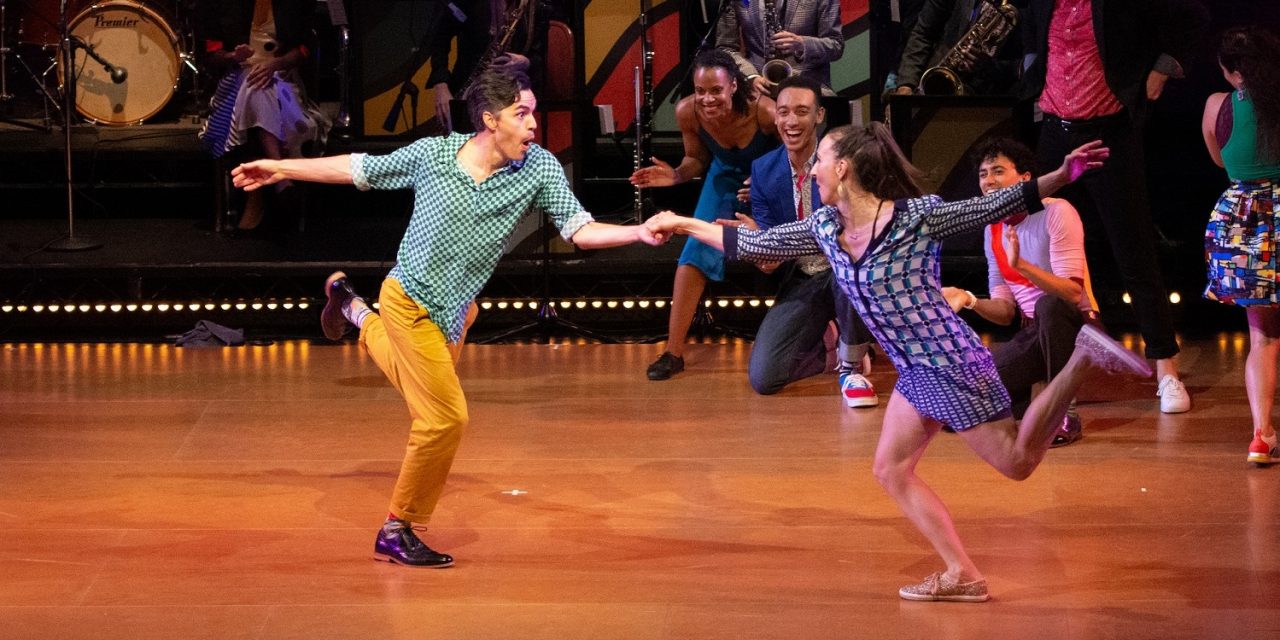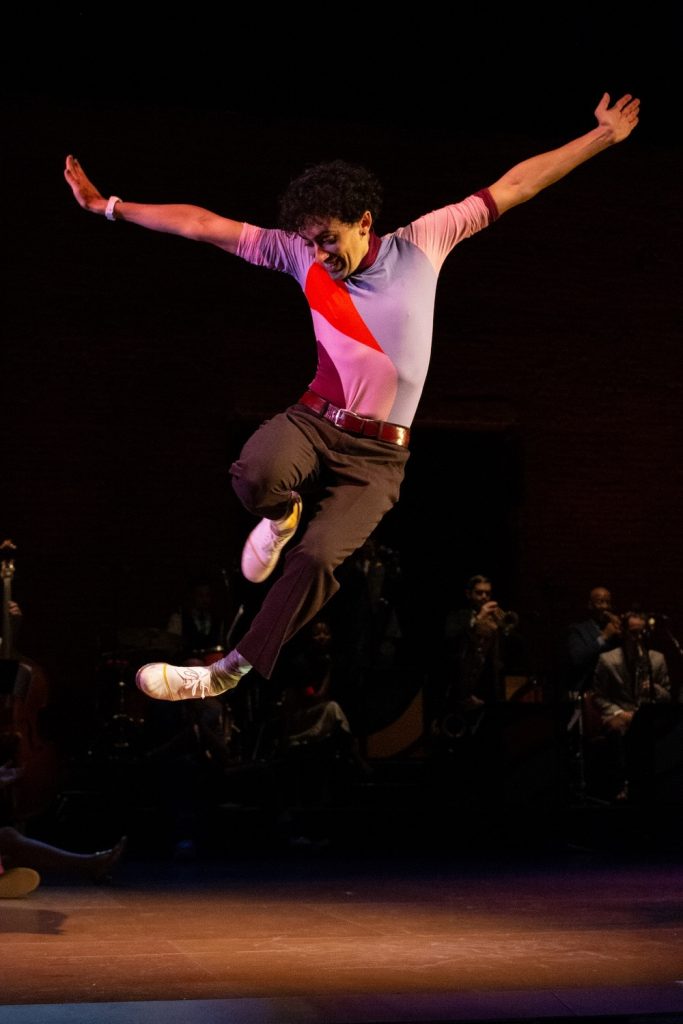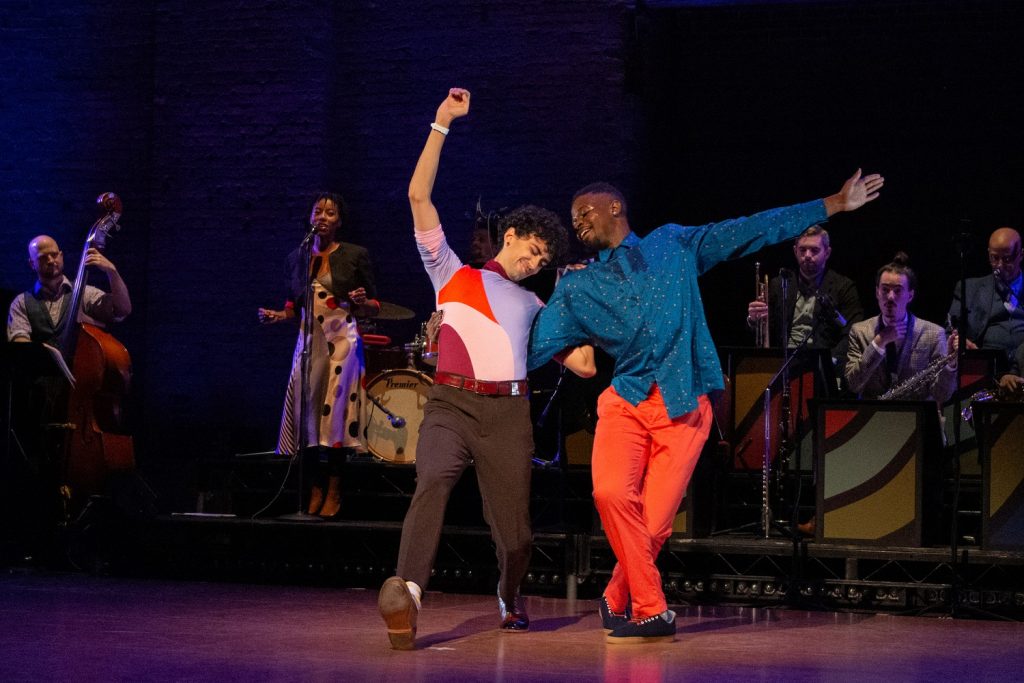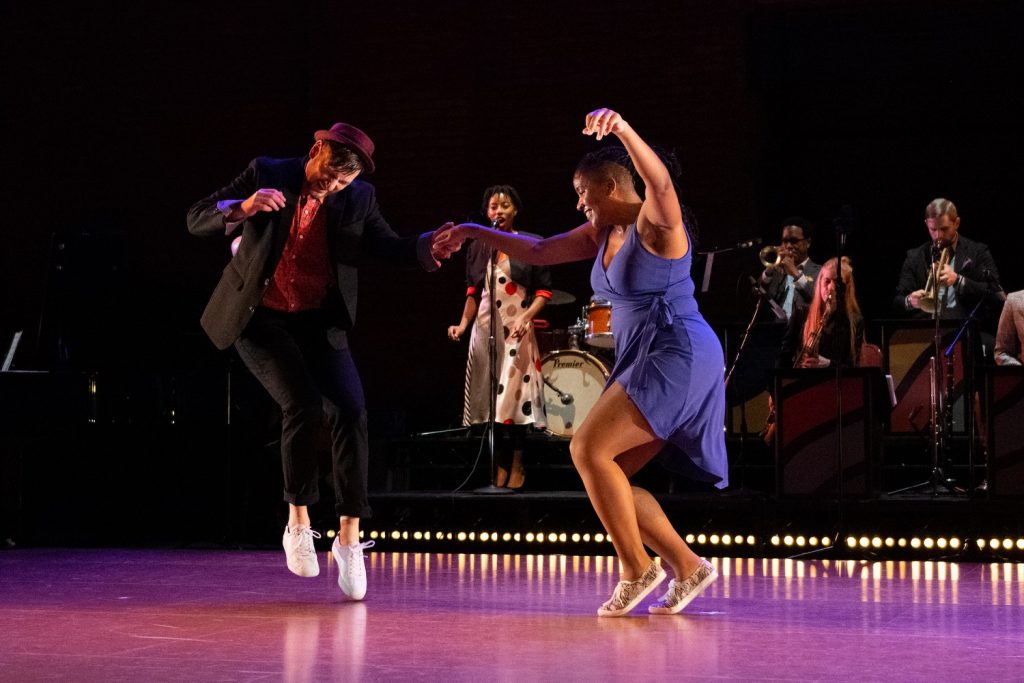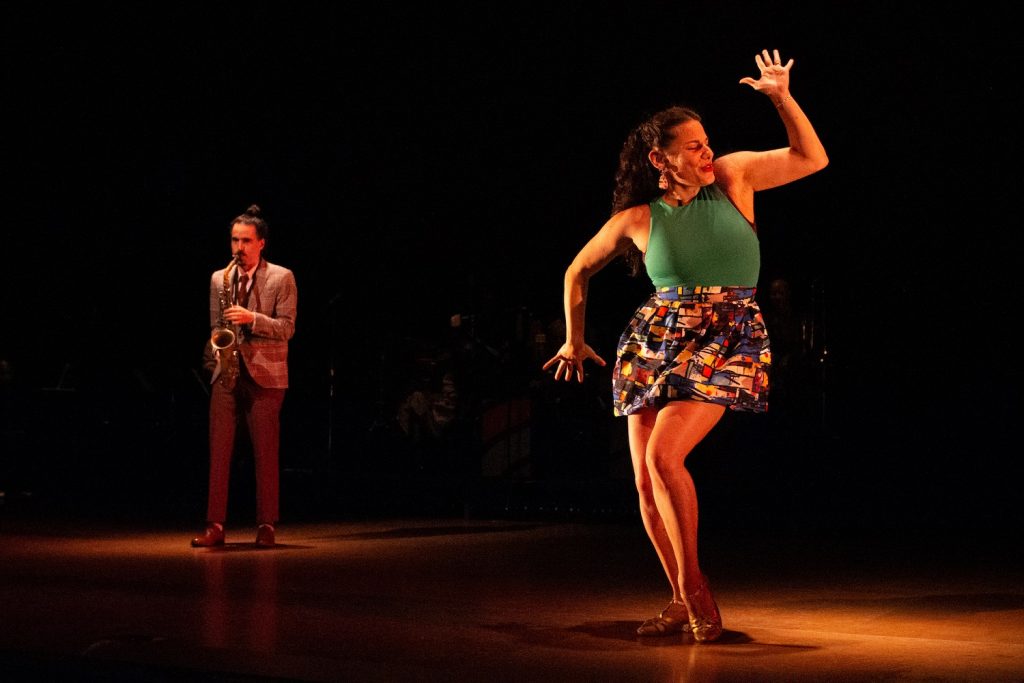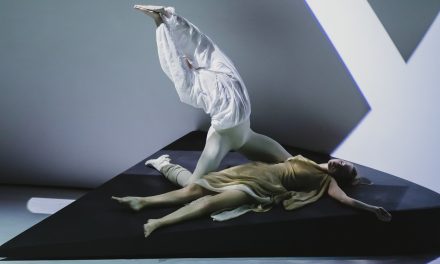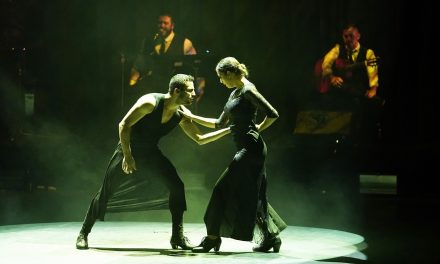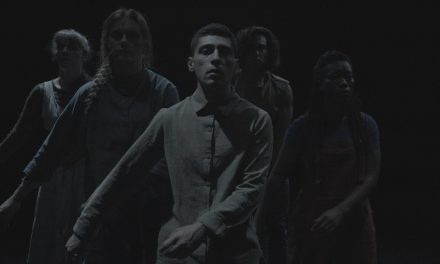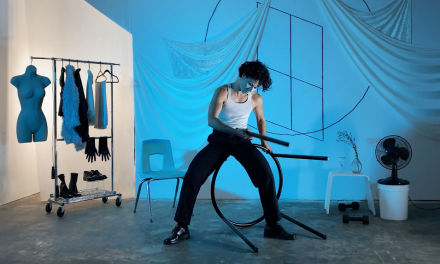Triple steps and rock steps abound on the downbeat — with the curtain halfway up. For the opening notes of SW!NG OUT at The Music Center, you can only see the dancers’ legs, moving to the syncopated sounds of the Eyal Vilner Big Band. When the curtain finally takes its cue and flies all the way up, a high-energy group number sets the tone for an evening of spontaneous joy.
Tap phenom Caleb Teicher and what they call the Braintrust, or creative team, have built an atmosphere that honors the Black origins, history, and beauty of Lindy Hop and Swing. The work references its roots, even citing legend Frankie Manning’s “Big Apple Contest” choreography. And that’s beautiful — to see the celebration of pioneers that were for so long erased, whose creative work is so often appropriated.
Teicher and the rest of the Braintrust (Evita Arce, LaTasha Barnes, Nathan Bugh, Macy Sullivan, Eyal Vilner) work hard to name and reference the Black ingenuity of Manning and the rest of Whitey’s Lindy Hoppers in the program, and to preserve the social/vernacular nature of the form by removing it from the proscenium. But even as the cast dances with the audience for the show’s second act on the plaza, there is just a thin fog of lingering dissonance that comes with putting a social dance on the stage.
Overall, the program is entirely lovely. There are blips of breath throughout as the dancers settle in with the band, and a real feeling of exchange between the two forms. A duet at the beginning between Teicher and dancer Joshua Mclean had me in tears 30 seconds in: the simplicity of their attention to each other was gentle, playful, hopeful.
And the cast themselves are delightful and ebullient. They respond to each other with lightning reflexes, actively listening all the time rather than just phoning it in for another night. Their bond as a community is evident, and I’m sure the evening would change quite a bit if just one of the dancers were to swap out. It’s just the nature of the form, and Teicher captures that well, with a structure designed to support both improvisation and unison choreography. Their tap solo halfway through is expertly placed and wildly endearing: their pause for an untied shoe and a prop accidentally thrown at the band only win the audience over more.
The synergy between the dancers and musicians, too, is one of a longstanding relationship. Dancer Gaby Cook performs a call-and-response duet with saxophonist and bandleader Eyal Vilner, who has actually been Cook’s dance student in the past. The gold is in the knowing smiles on their faces as they riff back and forth, catching each other on and off the beat. And it’s this push and pull throughout that really does emulate the essence of Swing in its true social context.
The committed dive the entire cast takes into demonstrating the spontaneity of a form built on improvising is impressive. They’re all such pros that it’s often hard to tell when the steps cross into choreography, but the best moments are always the improvised ones. Barnes proves it in a solo that effortlessly blurs the Swing vocabulary into its Black social form sisters — waacking, house, and more that live timelessly inside her being.
Teicher’s strength, though their choreography is enjoyable and nuanced, lies in setting a stage where the dancers can outshine the set steps in their off-the-cuff jam solos. There’s an expertise to opening that space within a structured evening work, not to mention a healthy dose of trust required between choreographer and cast. The choreography is a strong bread and butter on which the dancers are free to add their own flair — a rare experience for a touring evening-length work.
The second half of this piece sometimes exists as the audience joining the cast onstage, but in this case featured an invitation onto the plaza for mixing. Though it’s definitely a bonus for the audience, you can tell it’s a treat for the cast too: their enthusiasm for joining the local community of dancers really exposes the purpose of the social practice. And to see the proscenium removed definitely extracts a layer of that tension between the white stage and the Black history.
In a panel at The Music Center on Saturday alongside Cook, Christi Jay Wells, and E. Moncell Durden, Barnes described her collaborator Teicher as a cultural surrogate who is taking care of the form. We must recognize the lineage and erasure of the Black history of this form – and how it has evolved into many other vernacular forms that suffer the same appropriation. But here, SW!NG OUT is a celebration of its real history and a faithful dive into its core. Its second half allows us to strip the bells and whistles that the concert stage demands, leaving a steadfast commitment to the social catharsis and the liberation that honoring the legacy can bring. It’s our responsibility now, as spectators and participants, to continue to acknowledge that legacy as Swing lives on worldwide.
To learn more about The Music Center, please visit their website.
Written by Celine Kiner for LA Dance Chronicle.
Featured image: SW!NG OUT – (L-R) Brian Lawton, Laura Glaess – Photo by Grace Kathryn Landefeld

